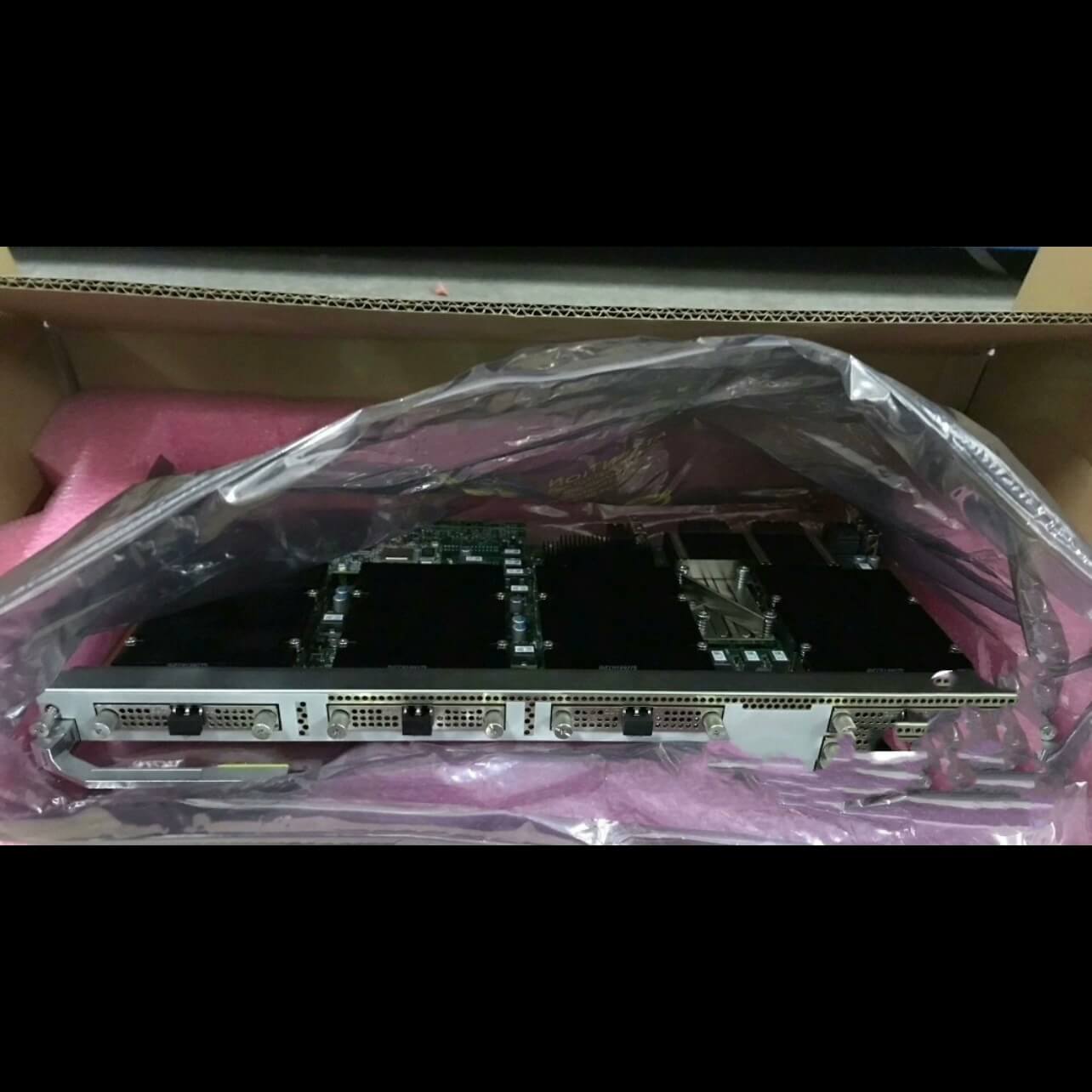Link You To Professional Networks

TNV1T402EQ06 Is Huawei OptiX OSN 9800 2 Port 100GE Ethernet Aggregation Board

Huawei OptiX OSN 9800 2 Port 100GE Ethernet Aggregation Board TNV1T402EQ06 Overview
TNV1T402EQ: 2 x 100GE Ethernet aggregation board
The TNV1T402E board has two variants: TNV1T402EQ01 and TNV1T402EQ06. The two variants are interchangeable.
The TNV1T402E board is a 2 x 100GE Ethernet Aggregation Board. The board implements conversion between the 2 x 100GE signals and the ODU0, ODU1, ODU2, ODU2e, ODU3, ODU4, ODUflex or OSUflex electrical signals.
The TNV1T402E board consists of a client-side optical module, signal processing module, control and communication module, and power supply module.
The TNV1T402E06 and TNV1T402E01 boards can completely substitute for each other, without any requirement for version upgrade or logical board creation.
The transmit and receive directions are defined in the signal flow of the board. The transmit direction is defined as the direction from the client side of the board to the backplane, and the receive direction is defined as the reverse direction.
Transmit direction
The client-side optical module receives optical signals from client equipment through the RX optical interfaces and perform O/E conversion.
After O/E conversion, the electrical signals are sent to the L2 switching module. The module performs operations, such as convergence. After convergence, the module outputs electrical signals to the OTN/OSU processing module.
The OTN/OSU processing module performs operations such as encapsulation and mapping processing, and OTN/OSU framing. After processing, and then outputs ODU/OSU signals to the backplane.
Receive direction
The OTN/OSU processing module receives ODU/OSU signals sent from the cross-connection board through the backplane. The module performs operations such as framing, demapping and decapsulation processing. Then, the module sends the electrical signal to the L2 switching module.
The L2 switching module deconverges the electrical signals and sends the signals with corresponding rates to the client-side optical module.
The client-side optical module performs E/O conversion of the electrical signals, and then outputs client-side optical signals through the TX optical interfaces.
Functions and features of the TNV1T402EQ06 board
|
Function and Feature |
Description |
|
Basic function |
The ports used as Data Port, supports the following service conversions: 100GE<->Packet<->ODU0/ODU1/ODU2(e)/ODU3/ODU4/ODUflex/OSUflex NOTE:
|
|
Service processing capability |
The maximum service processing capability of the board is 200 Gbit/s. If the total bandwidth of received services is greater than 200 Gbit/s, packets will be lost. |
|
Port rate |
100GE: Ethernet service at a rate of 103.125 Gbit/s. |
|
Port working mode |
100GE optical port: 100G Full-Duplex |
|
OTN overhead |
OSUflex/ODUflex/ODU0/ODU1/ODU2/ODU3/ODU4 layer: supports PM overhead processing. |
|
OSU |
Supported NOTE: The OSU function requires a license. |
|
QinQ |
Supports basic QinQ. |
|
Ethernet data frame format |
IEEE 802.3, Ethernet II, IEEE 802.1Q, IEEE 802.1p |
|
Maximum frame length for a port |
The MFL value ranges from 960 bytes to 9600 bytes. Supports a jumbo frame containing a maximum of 9600 bytes. |
|
Service bearing medium |
Port, QinQ |
|
Native E-Line service type |
NOTE: Inter-board E-Line services are not supported. |
|
Native E-LAN service type |
|
|
Diffserv |
Supported, compliant with RFC 2474 and RFC 2475. |
|
Traffic classification |
|
|
Traffic policing |
Committed access rate (CAR), two rate three color marker (trTCM), compliant with RFC 2698. |
|
Traffic shaping |
Port-based traffic shaping, queue-based traffic shaping |
|
Congestion avoidance |
WRED, tail dropping |
|
Congestion management |
Class of service (CoS), supporting SP+WFQ scheduling algorithms |
|
HQoS |
Supported NOTE: Support only V-UNI Egress and QinQ policies. |
|
LPT |
Supports packet LPT |
|
Client 1+1 protection |
Not Supported |
|
ODUk SNCP |
Supported |
|
OSUflex SNCP |
Supported NOTE: The board supports a maximum of 400 OSUflex SNCP protection groups. |
|
Tributary SNCP |
Supported NOTE: Supports tributary SNCP SNC/I protection. The inter-board LAG must work with the tributary SNCP SNC/I protection. Tributary SNCP SNC/I protection switching can be triggered only when the board is not powered on or offline after it is removed or reset (cold). |
|
Electrical-layer ASON |
Supported |
|
ERPS |
ERPS V1/V2, Supported, Comply with ITU-T G.8032/Y.1344. |
|
LAG |
Supports intra-board and inter-board LAG of Ethernet ports, and intra-board LAG of VP ports, compliant with IEEE 802.1ax. |
|
L1 service encryption |
Not supported |
|
LLDP |
|
|
Ethernet service OAM |
Supported, compliant with IEEE 802.1ag, ITU-T Y.1731/ITU-T G.8013 and ITU-T Y.1730 |
|
Ethernet port OAM |
Supported |
|
RMON |
Supported |
|
Physical clock |
Synchronous Ethernet processing supported. Synchronous Ethernet transparent transmission not supported. |
|
IEEE 1588v2 |
Supported NOTE: The port equipped with an electrical module does not support the function. The function is not supported when the interface type is Vp. |
|
ITU-T G.8275.1 |
Supported NOTE:
|
|
ITU-T G.8273.2 |
Supported |
|
High-precision clock synchronization |
Supported NOTE:
|
|
PRBS |
Supported the PRBS function in the backplane direction. |
|
Latency measurement |
Supported NOTE: In the OSU application scenario:
|
|
Inband DCN |
Supported |
|
Channel loopback |
The OSUflex channel loopback is supported. NOTE: The board supports a maximum of eight OSUflex channel loopbacks. |
|
Port loopback |
NOTE:
|
|
MAC layer loopback |
Supported |
|
PHY layer loopback |
Not supported |
|
Alarm and performance event monitoring |
|


